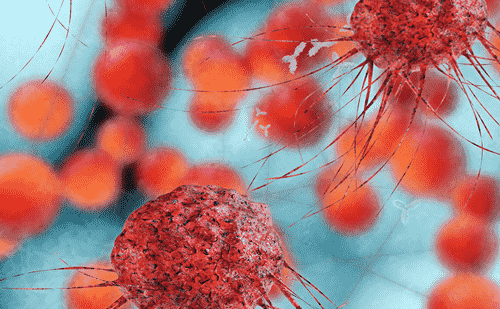The myelodysplastic syndromes (MDS) represent a heterogeneous group of clonal hematologic disorders, characterized by inefficient hematopoiesis, myeloid dysplasia, and an increased risk for developing acute myeloid leukemia (AML).1,2 In the majority of patients, morbidity and mortality are the result of progressive cytopenias, but transformation to AML is observed in approximately one-third of patients. MDS is highly associated with age, illustrated by an increase in the incidence with advancing age and a median age at diagnosis of 65–70 years.
While the pathophysiology of MDS is not fully understood, it is clear that it involves a multifactorial process that includes alterations in chromosomes, gene mutations, and changes in DNA methylation status in the hematopoietic cells.1,2 Recent large-scale genome-sequencing studies have identified multiple recurrent gene mutations in MDS. These mutations affect genes involved in epigenetic regulation (e.g. DNMT3A, TET2, IDH1/2, EZH2, ASXL1)3 and RNA splicing (e.g. SF3B1, SRSF2, U2AF1, ZRSR2)4,5 among other pathways. In the majority of MDS cases more than one mutation can be detected.6–8
Since MDS occurs primarily in elderly patients, it has been hypothesized that hematopoietic aging itself is an important factor in the pathophysiology of MDS. Indeed, hematopoietic stem cells (HSCs) in normal aged individuals and MDS patients exhibit similar differences when compared to normal young adults, including an increased frequency, myeloid skewing with diminished lymphoid potential, and decreased erythroid output.9–11
However, whether age simply increases the probability of acquiring diseaseinitiating mutations or whether cellular context itself contributes to disease pathogenesis is an unresolved question. Interest in this question has increased dramatically due to recent descriptions of clonal hematopoiesis in healthy elderly individuals. While the phenomenon of age-related clonal skewing in the bone marrow has been known for some time, the recent development of high-throughput genome sequencing has extended this observation by identifying presumed disease-initiating mutations in healthy individuals.12–16 Indeed, the spectrum of mutations found in healthy elderly individuals with clonal hematopoiesis overlaps considerably with the mutations observed in MDS patients at diagnosis, including DNMT3A, TET2, and ASXL1 mutations. Blood-specific clonal mutations were identified in 5–6% of healthy people aged 70 years or older in one study16 and clonal hematopoiesis was observed in 10% of individuals aged 65 and older in another cohort.13 The detection of a clonal mutation is associated with an increased risk for developing a hematologic malignancy. However, the majority of individuals with a detectable clonal mutation did not develop a hematologic disease and actually died from non-hematologic causes.13,14 This highlights the fact that the presence of a somatic clonal mutation is distinct from a diagnosis of MDS. In fact, it resembles more a condition like monoclonal gammopathy of undetermined significance (MGUS) , which is associated with increased risk of developing clinically relevant B-cell lymphoproliferations. Based on these insights it was recently proposed that in patients without hematologic alterations, detection of a clonal mutation in a gene also recurrently mutated in hematologic malignanciescould be classified as a separate entity, termed clonal hematopoiesis of indeterminate potential (CHIP).17 This would recognize this condition while preventing overdiagnosis and misinterpretation. It would also facilitate investigating the clinical meaning of detecting such mutations in the blood of a healthy person.17,18
CHIP arises when genetic alterations are acquired in HSCs, much like MDS. While previous studies in MDS demonstrated their HSC origin by showing that chromosomal abnormalities associated with disease (i.e. loss of 5q, 7 or gain of chromosome 8) are present in HSCs,10,11,19–22 a more recent study demonstrated that MDS-associated mutations in SF3B1 are present in HSCs.23 As previously described, there are several similarities between hematopoiesis in aging and MDS. However, there are also important differences. For instance, bone marrow dysplasia is not significant in healthy elderly and ineffective hematopoiesis only occurs in the context of MDS. In addition, normal elderly and MDS patients demonstrate differences in hematopoietic progenitor composition as well as HSC gene expression profiles and DNA methylation.11 Whether such differences are also present in CHIP HSCs when compared with elderly HSCs is an open question that will likely be the subject of future investigations.
Given that normal aged HSCs and MDS HSCs exhibit significant differences, some investigators have explored whether these differences might be due to alterations in the bone marrow microenvironment.24 Although several recent studies have revealed that bone marrow stromal cells may functionally interact with malignant marrow cells to promote disease phenotypes and that cell-intrinsic changes in stromal cells may induce MDS-like disease,25–27 more studies are required to elucidate whether aging is involved in these processes. In addition, investigating whether the presence of a mutation in a young or aged HSC results in the same hematopoietic phenotype would provide significant insights regarding the importance of the cellular context in which somatic mutations appear.
Overall, multiple recent studies have highlighted the differences between hematopoiesis in normal aging and MDS. The latter process clearly requires more than just age-related alterations, of which the specifics are currently being elucidated, and therefore now, the line between normal hematopoietic aging and MDS is largely a distinction based on clinical features. Given the significant overlap between these two states, finding features that are specific to each would be an attractive focus of future studies. A potential fruitful approach may be the evaluation of pediatric, nonfamilial MDS, which would allow researchers to distinguish between age- and disease-related alterations. In addition, to more directly address the contribution of aging to MDS pathogenesis, it will be important to use genetically accurate disease models, which may be induced at different ages to directly assess the influence of cellular age on disease characteristics. As such investigations are currently ongoing in various laboratories, we look forward to the results of these studies in the near future.













